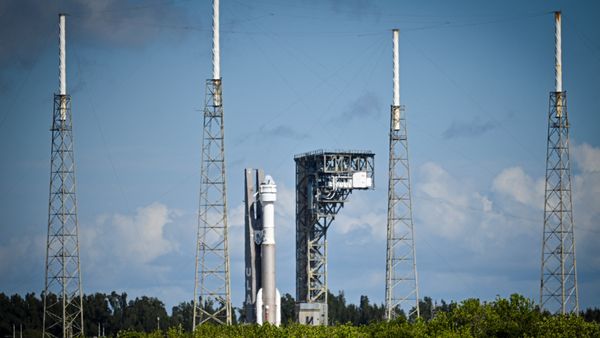
Last year, one pregnant patient at the Boise-based St. Luke’s Health System in Idaho had to be airlifted for emergency care. Since January of this year, there have been six pregnant patients who have had to be airlifted out of state because physicians couldn’t provide emergency, stabilizing care typically guaranteed under the federal law known as Emergency Medical Treatment and Labor Act (EMTALA).
As Salon previously reported, OBGYNs and family medicine doctors in Idaho live in fear that they will have to deny a pregnant patient stabilizing care if it includes an abortion. If they can’t justify that the patient was close enough to death, they risk facing two to five years in prison and losing their medical license. That’s because in January, the Fifth Circuit Court of Appeals in Texas ruled that emergency rooms aren't required to perform emergency abortions that would stabilize the health of the pregnant patient under EMTALA.
On Wednesday, the U.S. Supreme Court finally heard oral arguments on whether doctors can provide emergency abortions to stabilize a patient’s health under EMTALA in Idaho, or if Idaho’s near-total abortion ban takes precedence.
“We are in a situation in Idaho where pregnant persons no longer have access to routine, high-quality care,” Dr. Kara Cadwallader, who is a family medicine physician in Idaho, said in a statement prior to the oral arguments. “In particular, our legislature has banned appropriate care when folks are most in need of it, when they have a complication of pregnancy.”
An example of what patients are facing in Idaho right now is this: a pregnant woman’s water breaks when she’s 17 weeks pregnant, before a fetus is viable. Instead of terminating the pregnancy, which is already an incredibly difficult decision for the pregnant patient to make, doctors in Idaho have to wait until the patient is close to death to offer abortion treatment. In the meantime, the patient remains at a high risk for infection, sepsis or hemorrhage. By waiting, the pregnant patient could face an increased risk of losing reproductive organs.
“In Idaho, doctors have to shut their eyes to everything except death,” Solicitor General Elizabeth B. Prelogar said during the arguments on Wednesday. “Whereas under EMTALA, you’re supposed to be thinking about things like, ‘Is she about to lose her fertility? Is her uterus going to become incredibly scarred because of the bleeding? Is she about to undergo the possibility of kidney failure?’”
During the hearing, justices appeared to be split on whether or not Idaho’s near-total abortion ban overrides EMTALA or not.
Under EMTALA, hospitals and emergency rooms were required to provide emergency abortions even where there were strict abortions laws. The Biden Administration even sued Idaho, claiming that the state's near-total ban was in direct conflict with the law. But the state claimed that there wasn’t a conflict because technically it has a life-saving exception. Then in January, the Fifth Circuit Court of Appeals in Texas ruled that emergency rooms aren't required to perform life-saving abortions under EMTALA. The U.S. Supreme Court can now either rule that EMTALA preempts Idaho’s abortion ban, or it doesn’t.
As Alexa Kolbi-Molinas, deputy director of the ACLU Reproductive Freedom Project, told Salon, if the Supreme Court doesn’t rule that EMTALA covers emergency abortions, it would “make pregnant people second-class citizens in America's emergency rooms.”
On Wednesday, Justice Samuel A. Alito Jr. asked about the term “unborn child” in the EMTALA statute, questioning whether or not EMTALA should guarantee abortion care or not. “Isn’t that an odd phrase to put in a statute that imposes a mandate to perform abortions?” he asked.
In a press conference after the oral arguments, Carrie Flaxman, a senior advisor at Democracy Forward, told Salon that it’s “clear” that EMTALA is meant to expand protections for pregnant people, not “eviscerate” them.
“That was the purpose of the amendment that added the language issue, the language ensures that when a pregnant person is in labor, that they're not transferred to another hospital unless it's safe to do so,” Flaxman said. “It ensures that a pregnant person can receive treatment for their pregnancy even if their own health or life is not currently at risk.”
Flaxman said that not only is this argument suggested by Alito “just wrong on the plain meaning of the statute, but it's incredibly dangerous.”
“Through EMTALA, Congress protected the ultimate power of every pregnant person to decide what's best for themselves, their health and their pregnancies, including if that means ending the pregnancy,” Flaxman said. “And so the notion that the same language that was used to expand EMTALA’s protections for pregnant people somehow now carves them out of the law’s full protections defies logic.”
Kolbi-Molinas said this goes “beyond” a strategy to restrict abortion.
“They are pushing a legal strategy to give rights to embryos and fetuses that would override the rights of the pregnant,” Kolbi-Molinas said. “Threatening access not just to abortion, not just to emergency abortion, but access control to fertility care to other forms of reproductive health care.”
Notably, EMTALA first came to light as a response to hospitals turning away uninsured pregnant people in active labor. Congress passed the law in 1986 and specifically included provisions mandating federally-funded hospitals to accept a patient in active labor, even if she doesn’t have insurance. President Ronald Reagan signed it into law. The purpose of EMTALA, Kolbi-Molinas said, was to establish a national baseline of emergency care.
Alexis McGill Johnson, president and CEO at Planned Parenthood Federation of America, said during the press conference that abortion opponents are playing a “dangerous game” and there’s “no line” they won't cross.
“The Supreme Court must reject this effort to end federal protections for pregnant people who need emergency care,” McGill Johnson said. “You go into an emergency room, you should be able to get the emergency care you need, including an abortion.”
What happens next? In the next few days, the justices will likely cast tentative votes in private. Subsequently, draft opinions will be prepared and shared. Like the mifepristone case also being considered by the Supreme Court, which concerns a common abortion drug, experts believe the public won’t hear about a ruling until late June of this year.
CORRECTION: This article has been updated to clarify a quote from Carrie Flaxman that was incorrect due to a transcription error.






